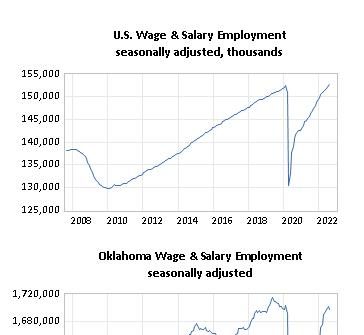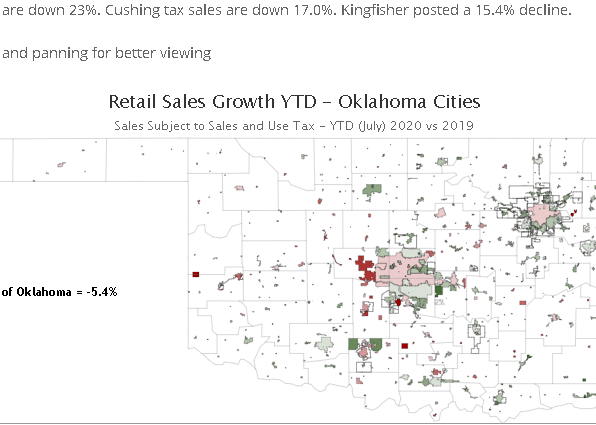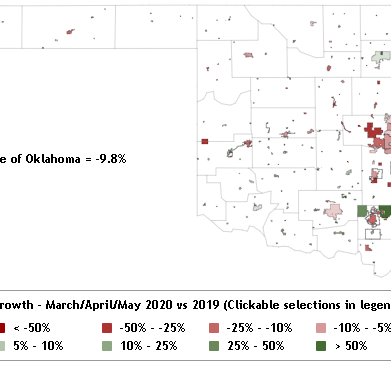Oklahoma's post-pandemic recovery has been disappointingly slow relative to the nation. The state and both major metro areas have lagged well behind the U.S. in…
U.S. Population Growth Slows to Modern Era Low
Yep, that slowdown in population growth we all knew was coming is officially here. I thought I would share a little data because it may be the least discussed factor underlying U.S. economic growth at the moment.
The slowing is barely visible in a historical line graph of monthly population data (see below).
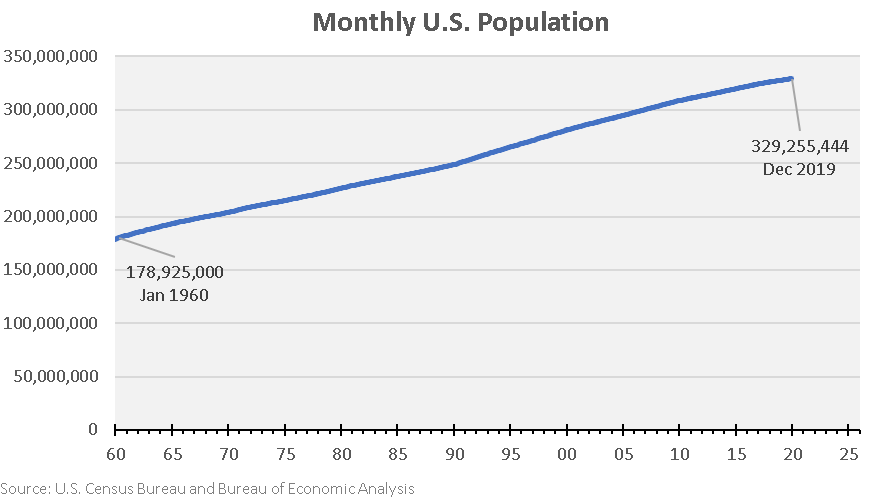
However, the deceleration in growth is stark when viewed on a rolling 12-month percentage basis. U.S. population growth has dropped by half in a little more than a decade, from about 1.0% annually to only about 0.5% currently. The most recent drop from 0.72% in 2016 to 0.48% currently was an especially steep and swift decline.
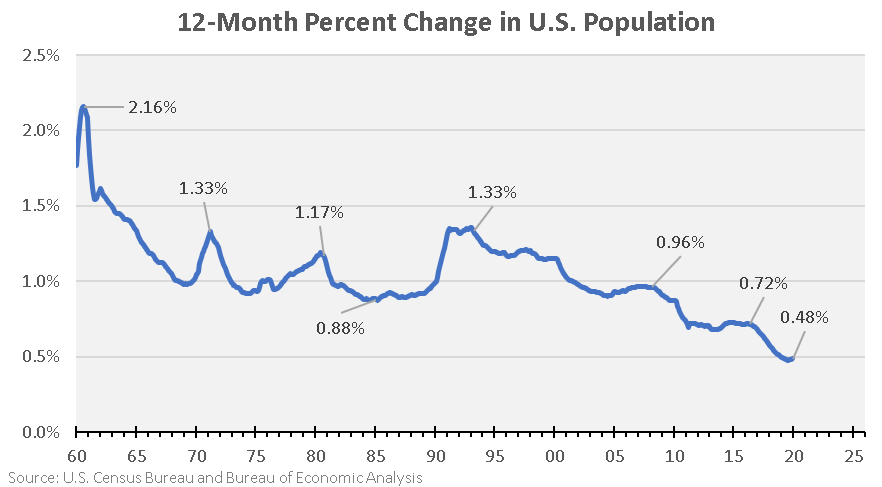
The slowing seems starkest when viewed by the change in the number of new residents annually. The U.S. is currently adding only about 1.64 million annually, down sharply from about 2.3 million as recently as early 2016 and 2.9 million in early 2008. Almost 3.5 million were added annually at the recent peak in the early 1990s.
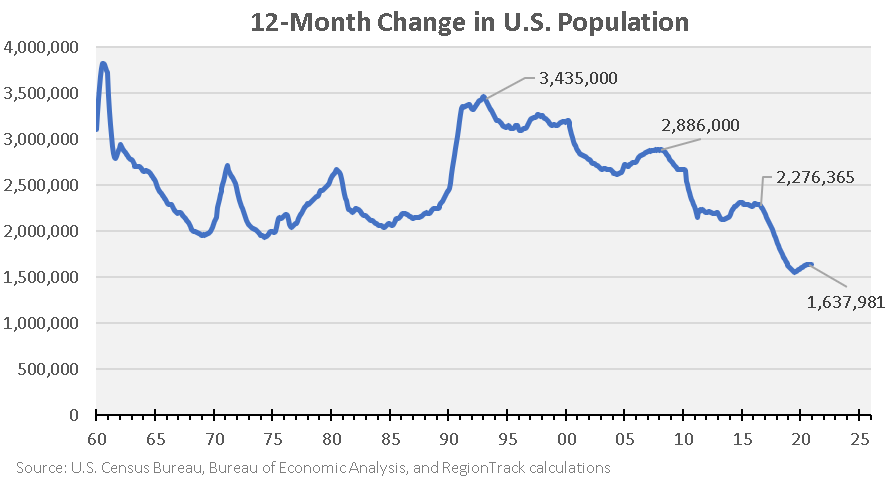
Why the slowing? Two reasons.
First, the natural rate of population growth (births minus deaths) continues to fall and dropped below 1 million for the first time in several decades. It was more than 1.5 million just a decade ago.
Second, net international migration, which is volatile historically, has dropped by half since 2016, from about 1 million to only about 600,000 annually. This is the lowest level of net in-migration in at least the past three decades.
The good news is that recent Census estimates suggest that the steady decline in population growth may have bottomed temporarily in the second half of 2019. Looking forward, Census forecasts for 2020 suggest an increase of 1.64 million new residents, only a very slight acceleration in growth to 0.5%.
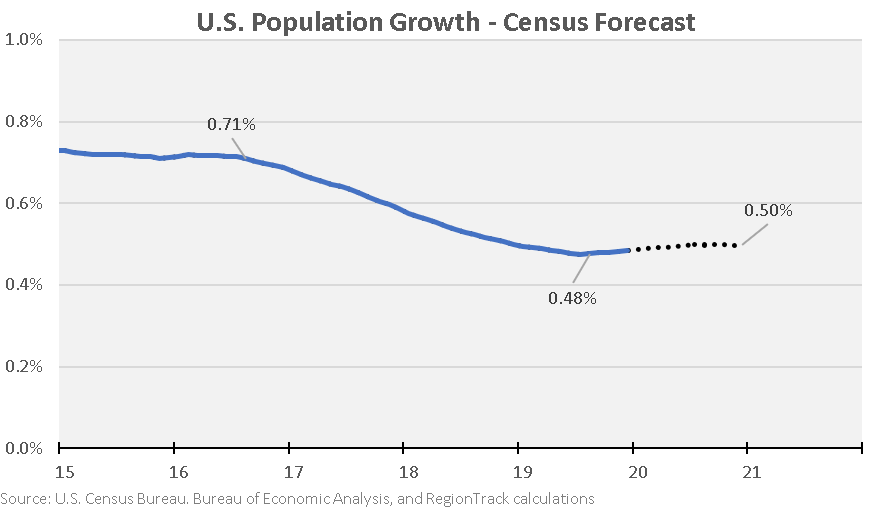
Under the current forecasted pace, the U.S. should push beyond 330 million persons at some point around mid-year 2020.
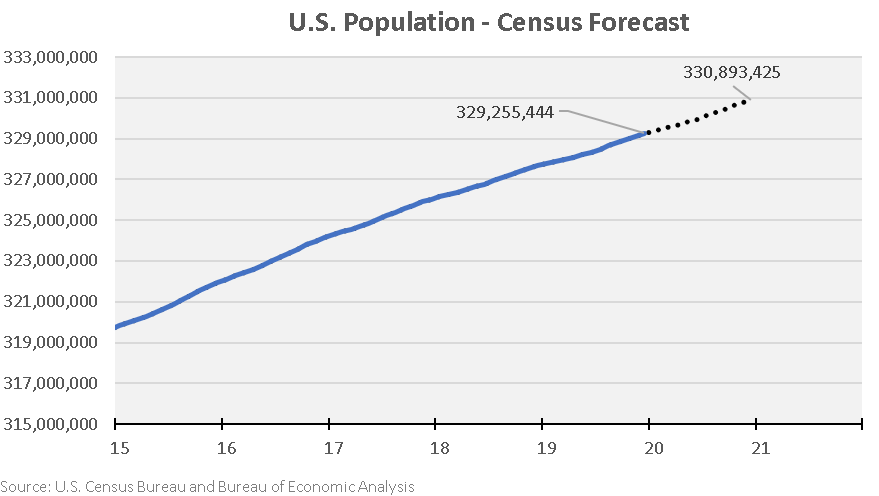
The slowdown in population growth is visible across most states, metro areas, and counties. Many regions are undoubtedly viewing the slowing in their local population growth as region-specific rather than a symptom of the national trend. The slowing is also casting doubt on the viability of economic development through population growth for many regions, particularly those with already-low population growth.

